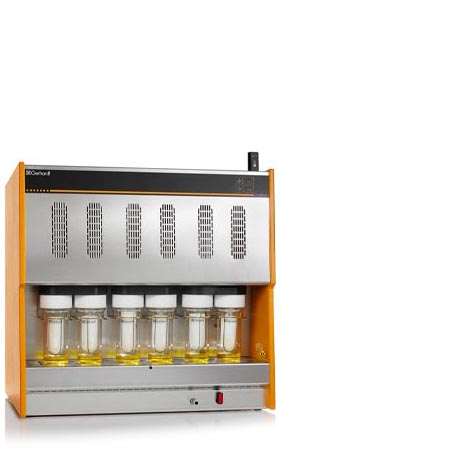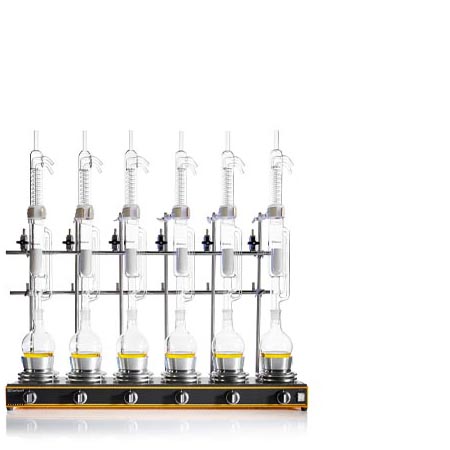Extraction methods are often used for the traditional determination of fat in food and animal feed. The physical separation procedure is also used in environmental and residue analysis and for the quality control of raw materials. In many environmental laboratories, the method is used, for example, to analyse dioxins, pesticides, EOX (extractable organic halogen compounds) and other hazardous substances. In the textile industry, the extraction with the Soxhlet method is used to analyse coatings of fibres. The determination of TNT derivatives in soils and similar samples in residue analysis is another possible application.
The substance to be determined is dissolved out of the sample using a suitable solvent and separated from the solvent. The resulting extract can now be determined quantitatively or qualitatively.
For example, petroleum ether, hexane or diethyl ether are used for the extraction of fats and oils from food and feed. The methods used here are called the Röse-Gottlieb principle, fat content according to Schmid-Bondzynski-Ratzlaff (SBR), total fat according to the Weibull-Stoldt or Weibull-Berntrop principle or, in the feed sector, raw fat determination by Weender analysis. Organic pollutants can be extracted from various types of samples with hexane, acetone or toluene or mixtures thereof.


